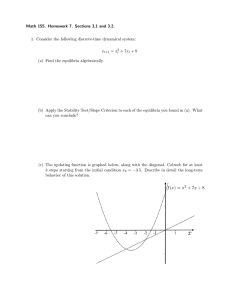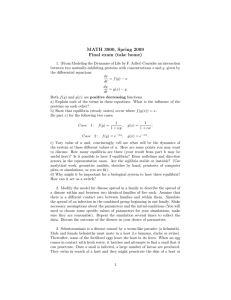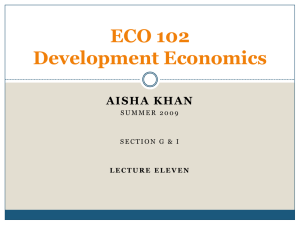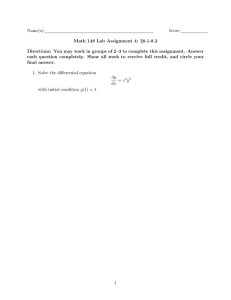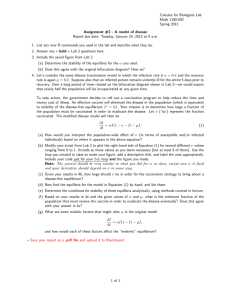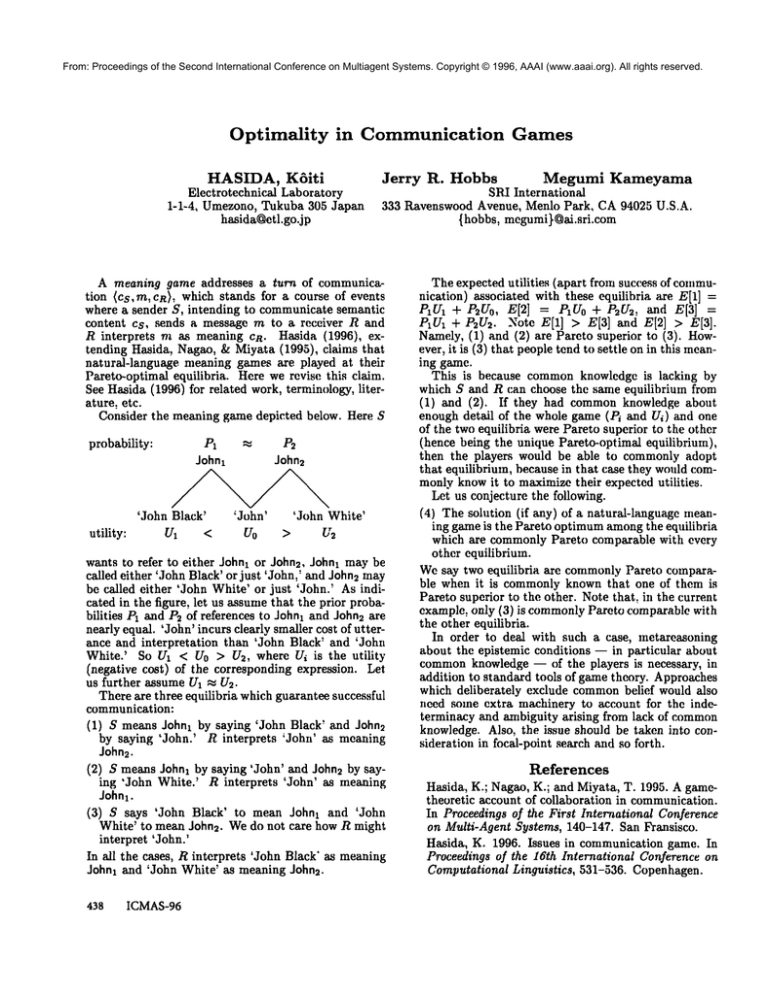
From: Proceedings of the Second International Conference on Multiagent Systems. Copyright © 1996, AAAI (www.aaai.org). All rights reserved.
Optimality
in
HASIDA, KSiti
Electrotechnical Laboratory
1-1-4, Umezono, Tukuba 305 Japan
hasida@etl.go.jp
Communication
Jerry
utility:
~
P1
John1
’John Black’
U1 <
’John’
U0
Pz
John2
’John White’
>
U2
wants to refer to either John1or John2, John1may be
called either ’John Black’ or just ’John,’ and John2 may
be called either ’John White’ or just ’John.’ As indicated in the figure, let us assumethat the prior probabilities P1 and Pz of references to John1 and John2 are
nearly equal. ’John’ incurs clearly smaller cost of utterance and interpretation
than ’John Black’ and ’John
White.’ So 0"1 < U0 > U2, where U~ is the utility
(negative cost) of the corresponding expression. Let
us further assume U1 ~ U2.
There are three equilibria which guarantee successful
communication:
(1) S means John1 by saying ’John Black’ and John2
by saying ’John.’ R interprets ’John’ as meaning
John~.
(2) S means Johnaby saying ’John’ and John2by saying ’John White.’ R interprets ’John’ as meaning
Johnl.
(3) S says ’John Black’ to mean Johnl and ’John
White’ to mean John2. Wedo not care how R might
interpret ’John.’
In all the cases, R interprets ’John Black" as meaning
Johnz and ’John White’ as meaning John2.
438 ICMAS-96
Megumi Kameyarna
SRI International
333 Ravenswood Avenue, Menlo Park, CA 94025 U.S.A.
{hobbs, megumi}@ai.sri.com
A meaning game addresses a turn of communication Its,re, ca), which stands for a course of events
where a sender S, intending to communicate semantic
content cs, sends a message m to a receiver R and
R interprets
m as meaning ca. Hasida (1996), extending Hasida, Nagao, & Miyata (1995), claims that
natural-language meaning games are played at their
Pareto-optimal equilibria. Here we revise this claim.
See Hasida (1996) for related work, terminology, literature, etc.
Consider the meaning game depicted below. Here S
probability:
R. Hobbs
Games
The expected utilities (apart from success of communication) associated with these equilibria are E[1]
P~U~ + P2Uo, E[2] = P~Uo + P~.U2, and E[3] =
PIU1 + P~.U2. Note E[1] > E[3] and E[2] > E[3].
Namely, (1) and (2) are Pareto superior to (3).
ever, it is (3) that people tend to settle on in this meaning game.
This is because commonknowledge is lacking by
which S and R can choose the same equilibrium from
(1) and (2). If they had commonknowledge about
enough detail of the whole game (Pi and Ui) and one
of the two equilibria were Pareto superior to the other
(hence being the unique Pareto-optimal equilibrium),
then the players would be able to commonly adopt
that equilibrium, because in that case they would commonly knowit to maximizetheir expected utilities.
Let us conjecture the following.
(4) The solution (if any) of a natural-language meaning game is the Pareto optimumamongthe equilibria
which are commonly Pareto comparable with every
other equilibrium.
Wesay two equilibria are commonlyPareto comparable when it is commonlyknown that one of them is
Pareto superior to the other. Note that, in the current
example, only (3) is commonlyPareto comparable with
the other equilibria.
In order to deal with such a case, metareasoning
about the epistemic conditions -- in particular about
commonknowledge -- of the players is necessary, in
addition to standard tools of game theory. Approaches
which deliberately exclude commonbelief would also
need some extra machinery to account for the indoterminacy and aznbiguity arising from lack of common
knowledge. Also, the issue should be taken into consideration in focal-point search and so forth.
References
Hasida, K.; Nagao, K.; and Miyata, T. 1995. A gametheoretic account of collaboration in communication.
In Proceedings of the First Interr, ational Con/erence
on Multi-Agent Systems, 140-147. San Fransisco.
Hasida, K. 1996. Issues in communication game. In
Proceedings of the 16th International Conference on
Computational Linguistics, 531-536. Copenhagen.


